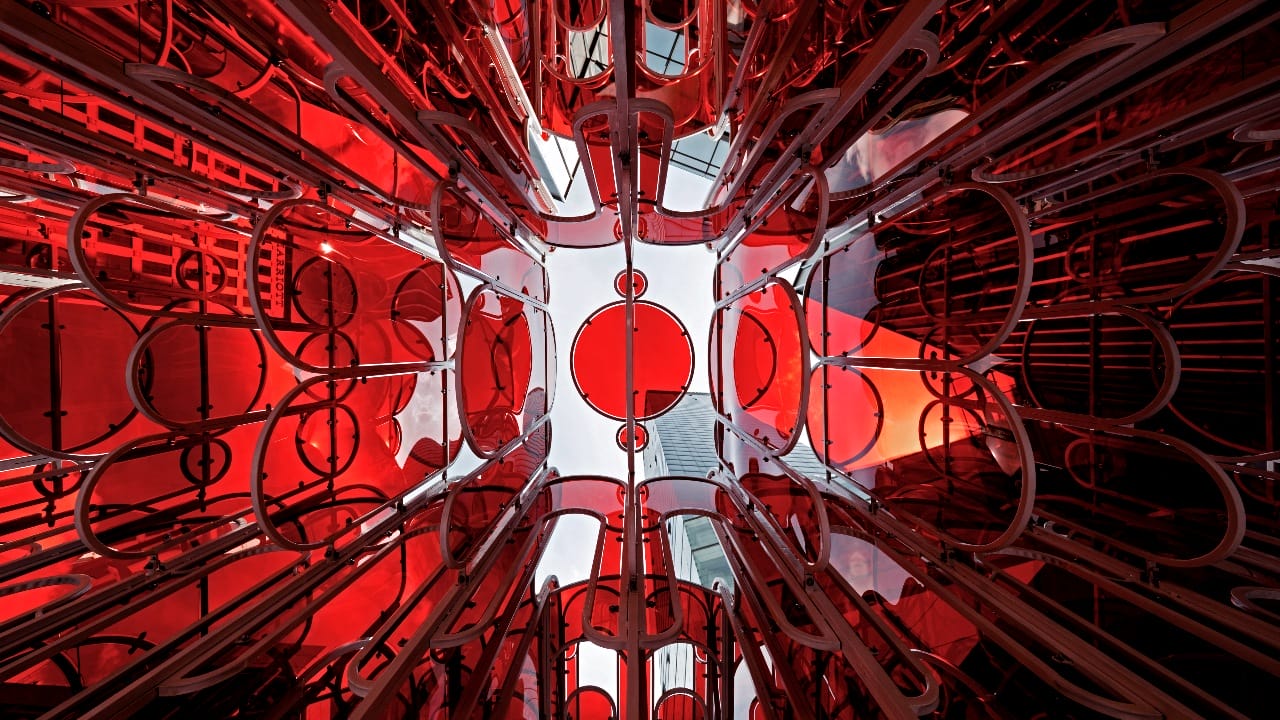Art can be powerful, sometimes surprisingly so, which naturally means the artists who create it are just as powerful, sometimes substantially more than the works themselves. But power means different things to different people—as this entire feature has shown—and for artist and architectural designer Pamela Tan, it’s in the way she is able to connect with the people who view, experience and even contribute towards her captivating pieces and installations.
Take, for example, Badminton Court Mural. Tan was invited to participate in a volunteer community project at the social housing apartments in Sri Tioman 1 in Taman Melati, Kuala Lumpur. She remembers that what was initially pitched as a straightforward mural evolved into a revitalisation of two badminton and sepak takraw courts, a project in which the residents also became involved. “I spoke to the head of residents, and my idea was to insert colours onto the courts while maintaining the badminton and sepak takraw lines. They liked the idea and also asked for the residents to get involved to do some of the work and to paint,” Tan says. “When the work was done, you saw kids rollerblading there and using the courts. People didn’t park their motorbikes there anymore either. So, though it was a small change, I felt that I could still contribute something in my small role.”

With her background in architecture, it’s easy to see why many of Tan’s works are usually in public spaces that invite viewers to participate in, immerse and, yes, take selfies with. From Sunnyside Up in Pasar Seni MRT station to Memory Veil in Pavilion Kuala Lumpur, and plenty more besides, her art is not only communal but also connected. “The first thing you need to do is understand the existing context: how you feel about space, how the public behaves around the space, what is the new meaning or narrative if you’re adding a new element to that existing context. That’s where the architectural thinking comes in,” Tan says. “I like to work on creating experiences that engage people. They don’t have to feel the same way as I feel about the work. But in their own way, they can interpret it, the meaning behind the work and how they feel about it.”
Tan embarked on her career as an artist in early 2018, after working in an architecture practice for a couple of years. It was a gutsy move. “I reached a point where I needed to honour my instinct and my interest to do this niche, experimental work that I wanted to do,” she remembers. “Because the work I do has often never been done before, it can get a bit lonely in terms of finding someone to talk to about a certain issue or this new form of work. But reaching out to like-minded peers, friends, designers or other artists helps a lot.”
It’s also how Tan finds, and continues to find, inspiration to create art. Especially in an age when art can come from anything—even an algorithm—she feels it’s more important than ever to be involved in a variety of communities and to understand as wide a cultural context as possible. “Getting to know different people, suppliers, crafters or technicians, and trying to understand where they come from—that’s where the ideas keep coming from,” Tan says. “I’m also invited to attend talks or to give lectures. It’s very interesting, the way I’m able to reach out to people from different backgrounds, learning from them, about their stories and why they’re passionate about what they do. Sometimes, I feel that I could collaborate with them because I value their work.”
A recent collaboration Tan was involved in was together with Cosentino. Held at the Cosentino showroom in Petaling Jaya, she presented a talk on ‘Bridging Communities through Public Art in Urban Architecture and Design’, in which guests discussed together with Tan how local heritage and social infrastructure can inspire creative expressions and community discussions. The session also aimed to inspire budding artists and aspiring architects and interior designers on how architecture can inspire art, shape public experiences and foster community engagement.

Although many of Tan’s art and installations are temporary, you’ll be seeing more of her work soon. She says she has multiple projects and ideas in the pipeline as well as more events she’ll be attending as her schedule allows (“There’s never enough time!” she laughs). Not that she’s complaining, of course. “I’m happy where I am. I’m still on an adventure to create more interesting work and to create experiences that leave deep impressions, where everyone has their own interpretations of them. That, to me, is a sign that the work is good—that it creates dialogue and that people are thinking about it.
“It’s about appreciating the little things that I do and how I feel connected to them. Success, to me, is being able to contribute and to connect with others, like how I would connect with myself.”
Illustrations by Tan Eng Huat





